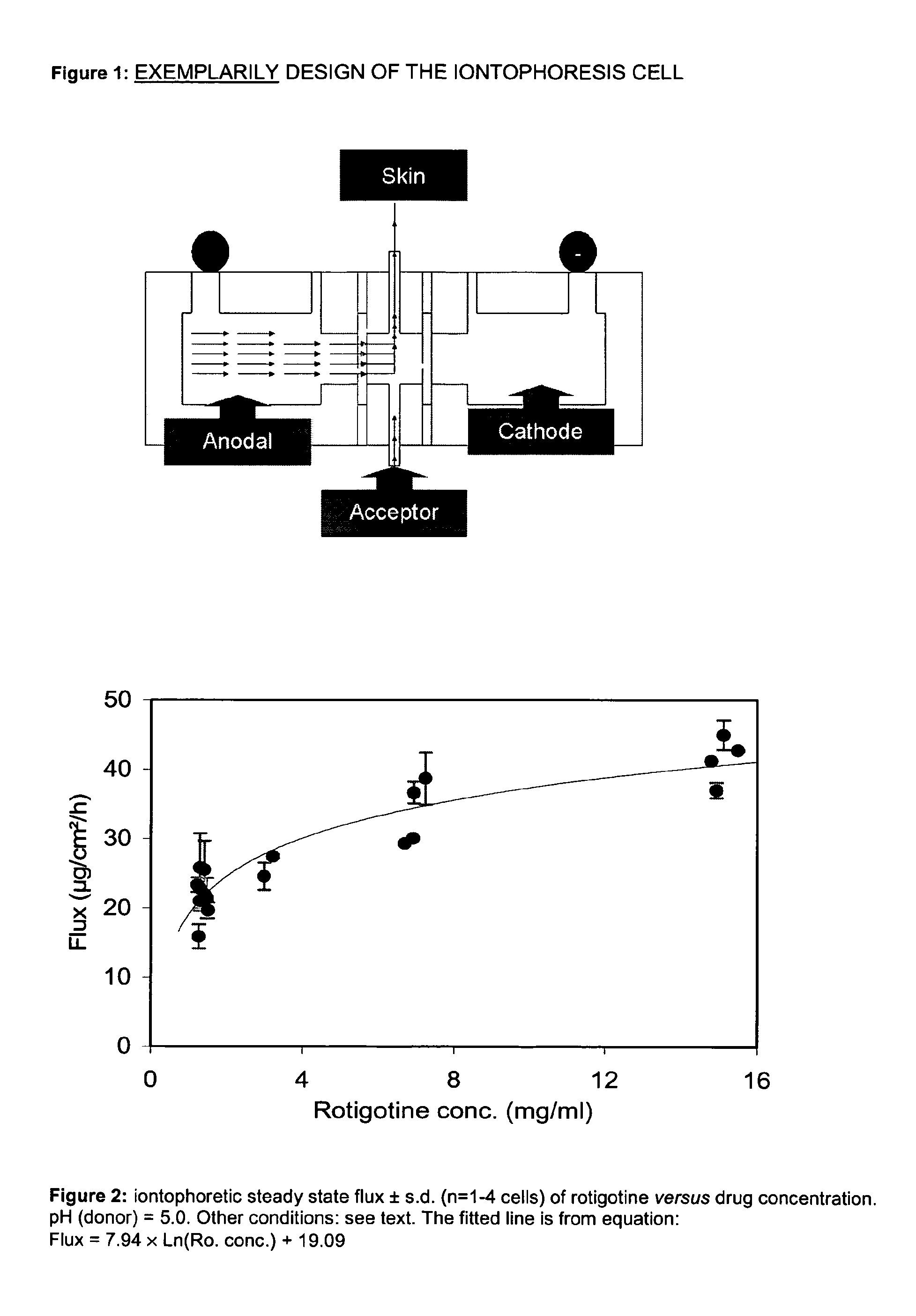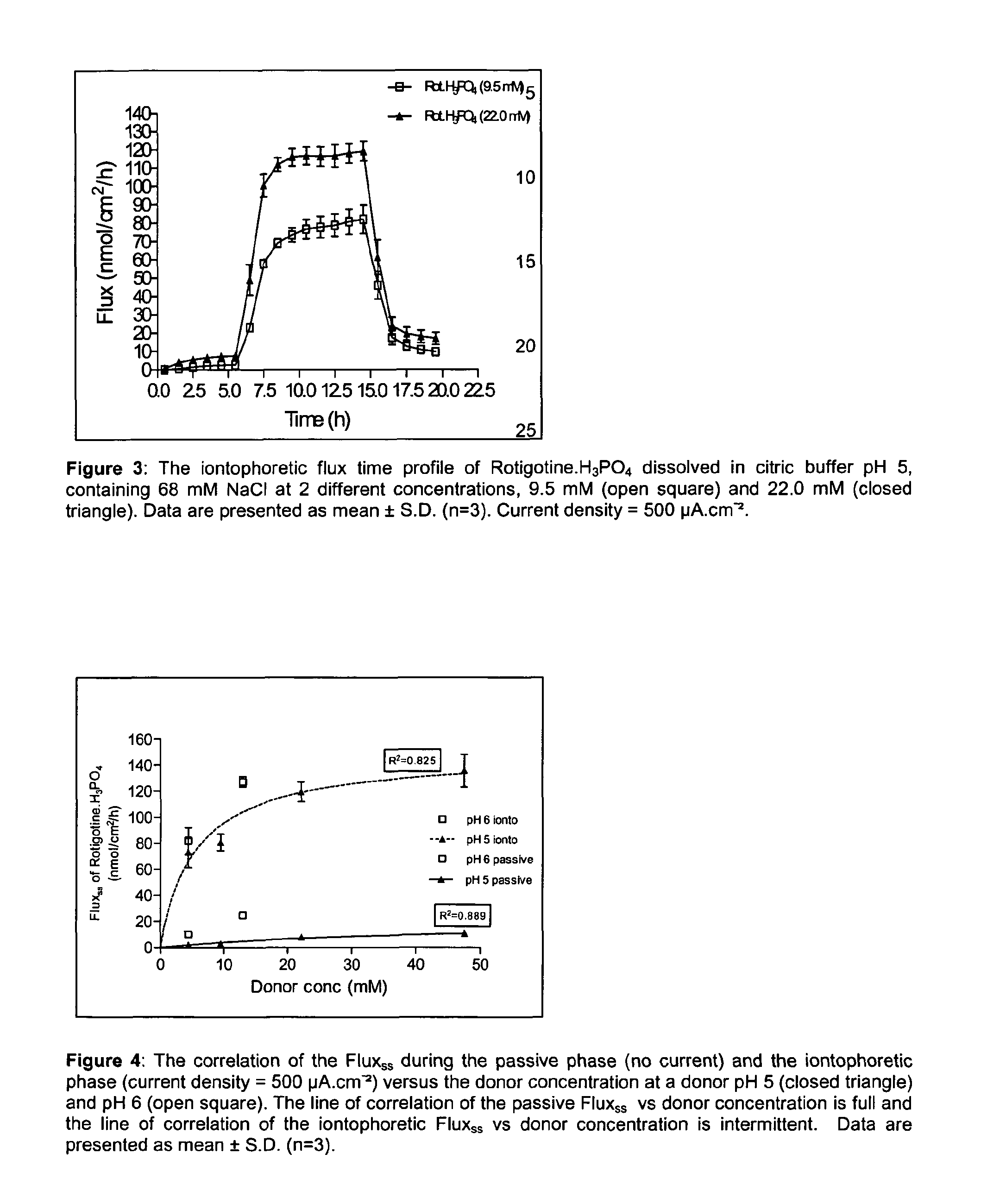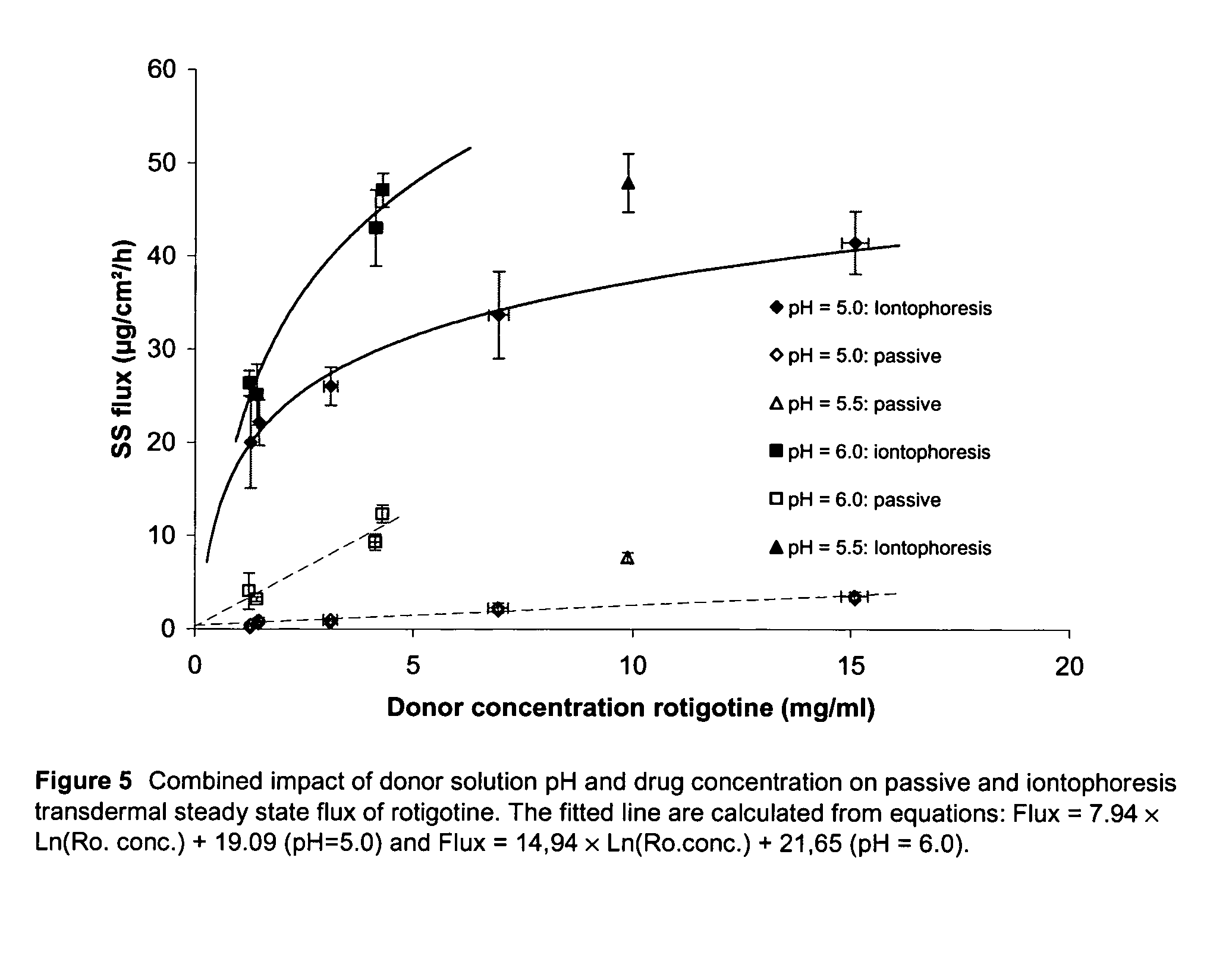Pharmaceutical composition comprising rotigotine salts (acid or Na), especially for iontophoresis
a technology of iontophoresis and pharmaceutical composition, which is applied in the direction of drug composition, biocide, therapy, etc., can solve the problems of increasing the amount of active ingredients, severe side effects, and people's irresistible urge to move, so as to achieve the desired level the onset time can be significantly reduced
- Summary
- Abstract
- Description
- Claims
- Application Information
AI Technical Summary
Benefits of technology
Problems solved by technology
Method used
Image
Examples
example 1
Solubility of Rotigotine Hydrophosphate and Rotigotine Hydrochloride
[0206]The maximum solubilities of rotigotine hydrochloride (abbreviated as Ro.HCl) and rotigotine hydrophosphate (abbreviated as rotigotine.H3PO4 or Ro.H3PO4) have been investigated as a function of pH in a number of solvents (table.1). Ro.H3PO4 was dissolved in the indicated buffer upon which the pH of the formed solution was adjusted to the target value by addition of sodium hydroxide solution. During addition rotigotine precipitated indicating that saturation was achieved. The drug was assayed by HPLC analysis in the filtered solution.
HPLC conditions:
[0207]Column: Merck Superspher 60 RP select B, length: 7.5 cm, column internal diameter: 4 mm, particle size: 5 μm[0208]Mobile phase: 60% (v / v) water, 40% (v / v) acetonitrile 0.05% (v / v) methanesulfonic acid[0209]Flow: 1.0 ml / min[0210]Injection volume: collected fractions: 50 μl, diluted donor solutions: 4 μl[0211]Column temperature: ambient[0212]Detection: fluorescen...
example 2
Iontophoresis Experiments
[0216]Many of the experiments were performed under the following test conditions—the standard conditions (If not stated otherwise these ones have been used in the respective examples): Donor solvent: citrate buffer (10 mM citrate, see Table 2), 4 g / l NaCl and 23 g / l mannitol, pH as indicated per experiment.
[0217]
TABLE 2Concentrations for producing citrate buffers at theindicated pH, other components, see above.Concentration (g / l)pHcitric acid•H2Otrisodium citrate•2 H2O5.00.731.945.50.462.306.00.242.60
[0218]Donor liquid preparation: a quantity of rotigotine.H3PO4 is dissolved in the indicated donor solvent to produce a sufficient amount of donor liquid at the selected concentration. The pH of the formed solution is adjusted to the target value by addition of sodium hydroxyde solution. The solution is then filtered over a membrane filter (pore size: 0.45 μm) and diluted with the same donor solvent as required to produce a concentrated drug solution of the indi...
example 3
General Procedure for Preparation of Rotigotine Acid Addition Salt
[0252]Rotigotine free base (6 g) was dissolved in isopropanol (IPA) (24 ml, 4 volumes) at ambient (app. 20° C.) and 800 μl was charged to a vial which were capped and stood at ambient for 1.5 hours. The solutions were heated to 60° C. and the acid was added as stock solutions (1 eq. in H2O or THF depending on solubility). The reaction mixtures were stirred at elevated temperature for 10 minutes and then cooled slowly to ambient. After 2 hours at ambient the reaction mixtures solutions were stored at 4° C. for 16 hours.
Rotigotine Dihydrogen Phosphate Salt (LJC-028-037-1)
[0253]Rotigotine free base (500 mg, 1.58×10−3 mol) was charged to a 5 ml round bottomed flask and IPA (1.5 ml, 3 volt) added at ambient. To the solution H3PO4 (171 mg, 1.1 eq.) was charged as solid and immediately an agglomeration of white material formed. The reaction mixture was stirred for 30 minute at ambient and sonicated in order to break up the b...
PUM
| Property | Measurement | Unit |
|---|---|---|
| current density | aaaaa | aaaaa |
| therapeutic concentration | aaaaa | aaaaa |
| pH | aaaaa | aaaaa |
Abstract
Description
Claims
Application Information
 Login to View More
Login to View More - R&D
- Intellectual Property
- Life Sciences
- Materials
- Tech Scout
- Unparalleled Data Quality
- Higher Quality Content
- 60% Fewer Hallucinations
Browse by: Latest US Patents, China's latest patents, Technical Efficacy Thesaurus, Application Domain, Technology Topic, Popular Technical Reports.
© 2025 PatSnap. All rights reserved.Legal|Privacy policy|Modern Slavery Act Transparency Statement|Sitemap|About US| Contact US: help@patsnap.com



